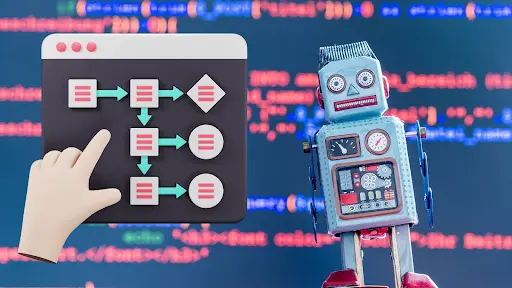Sometimes it feels like artificial intelligence exists somewhere in the background — in articles, news, and research papers. But if you look closely, it has already deeply integrated into everyday life. Quietly, without major announcements or headlines, it’s changing how we live, work, communicate, and relax. It’s not just our relationship with technology that’s evolving, but also what we expect from it. This isn’t a revolution — it’s more like a quiet restructuring of basic processes we used to overlook.
Table of Contents
ToggleAI and Entertainment: When Algorithms Know More Than You Do

In the world of entertainment, artificial intelligence has stopped being something purely technical — it’s become an active part of the process. Music services adjust playlists to match your daily rhythm, video platforms suggest content you didn’t even know you wanted, and streaming services learn from your preferences and moods. Games adapt to your playstyle, adjust difficulty levels, and sometimes even alter storylines based on your choices. This is no longer just about convenience — it’s a personalized environment where AI becomes an invisible director, subtly guiding the experience.
Esports deserves a separate mention. There, technology is no longer just a support tool — it’s something no serious team can function without. In the field of CS2 Esports, artificial intelligence helps analyze demos, predict match outcomes, and detect team play patterns. It breaks down player behavior on a microscopic level — from grenade usage frequency to cursor position in different phases of a round.
AI allows coaches and analysts to go deeper than ever before. What used to be done by intuition is now supported by solid data. As a result, strategies become more precise, players get tailored feedback based on actual performance, not just experience. Even viewers benefit — broadcasts become richer, with live stats, interactive visuals, and comparison tables generated in real time.
The gameplay itself turns into an analyzable system, where every movement can be explained and visualized. And what’s important — all this is integrated quietly, without noise or flashiness. There’s simply someone behind the curtain now, someone who sees more than we do.
AI in Everyday Work: A Silent Assistant Who Doesn’t Ask Questions
Automation in the workplace stopped being surprising a long time ago. We’re used to templates, quick commands, and repetitive actions we can delegate. But artificial intelligence has gone further. It doesn’t just follow instructions — it adapts. It learns how we work, what habits we have, how we write, plan, and respond. It’s becoming less of a tool and more of a co-author who’s always nearby.
For example, chatbots now understand the context of a conversation. They can hold meaningful dialogue, reroute tasks, or even solve them entirely. Google Docs suggests what you meant to write — not just in terms of spelling, but tone, intent, and mood. Image and text generation tools are no longer just for designers or copywriters — marketers, managers, teachers, and lawyers use them too. AI is no longer a luxury; it’s a part of the routine.
What matters isn’t just what AI can do, but how seamlessly it does it. You’re writing an email — and the system already suggests the wording. Creating a presentation — and it’s finding suitable images and graphs. Reviewing data — and it automatically generates summaries. All of this happens quietly, without fanfare or friction. AI doesn’t take up space, doesn’t distract, doesn’t demand attention. It simply helps.
And that’s where its real strength lies: it doesn’t intrude, it becomes a natural extension of the process. You work — and next to you, someone invisible is speeding things up, suggesting improvements, refining the output. Not like a boss, not like a student, but like someone who gets what you’re aiming for — and just helps get there a little faster.
AI and Content Consumption: A Smart Environment

There’s so much information today that it has turned into background noise — endless feeds, notifications, videos, articles, podcasts. Without filtering and sorting, it’s hard to make sense of it all. That’s exactly where artificial intelligence steps in: it filters, curates, and presents. It’s not just offering “another similar video” — it builds a full system of preferences based on watch time, reactions, replays, and even how long you hover over a thumbnail.
Platforms like TikTok, YouTube, or Spotify can’t function without AI anymore. They don’t just provide entertainment — they create the feeling that they know you better than you know yourself. Morning playlist suggestions, videos appearing just when you need a distraction, book or podcast recommendations tailored to your mood — none of it is random. It’s the algorithm watching, analyzing, adapting.
Sometimes I catch myself thinking that the AI is making decisions for me. I open the app, and I already know it’ll offer something I’ll like. And strangely, that doesn’t bother me. Maybe it’s even convenient. If the system works as it should, it doesn’t push something foreign — it curates what feels right. It builds an informational space around you where there’s almost nothing unnecessary.
Even if it’s not always a conscious choice, it’s still a kind of interaction — where AI becomes the mediator between you and the content. And it does so gently, without pressure. It just hands you something you’re likely to enjoy. Not forcing — just offering.
AI at Home: Subtle Changes That Reshape Daily Routine
When people talk about AI, the first thing that usually comes to mind is something big and complex — robots, data analysis systems, futuristic tech. But the real transformation is happening on a much smaller scale: in everyday life. What used to be “just appliances” has become an active part of our daily routines. Smart devices, voice assistants, apps — they don’t just respond to commands anymore. They observe, analyze, and learn.
A smart thermostat remembers how I like the temperature in the morning — no need to adjust it every day. My robot vacuum doesn’t move randomly; it builds a route based on my apartment’s layout and where it’s already cleaned. The fridge reminds me when we’re low on milk, and smart lights adjust brightness based on the time of day and natural light in the room. This isn’t science fiction — it’s daily life, and it’s accessible to almost anyone.
Sometimes I don’t even realize how many decisions I’ve outsourced to AI. Things just work — no extra alerts, no requests for confirmation. I go about my day, and the tech adapts to me. Taken individually, these changes seem minor. But together, they make it feel like everyday hassles are simply gone. The small things that used to steal attention just quietly disappear.
Life becomes smoother — not because of some wow effect, but because you no longer have to think about what to turn on, adjust, or set up. What used to be called a “smart home” is starting to feel like just… home.
Conclusion
I don’t think AI is going to suddenly flip our world upside down. It’s already doing that — slowly, quietly, but thoroughly. It’s not replacing people; it’s rewriting the scripts we live by. Where technology once felt like something external, now it’s just part of the background. And the background, as we know, shapes the story just as much as the plot itself.



